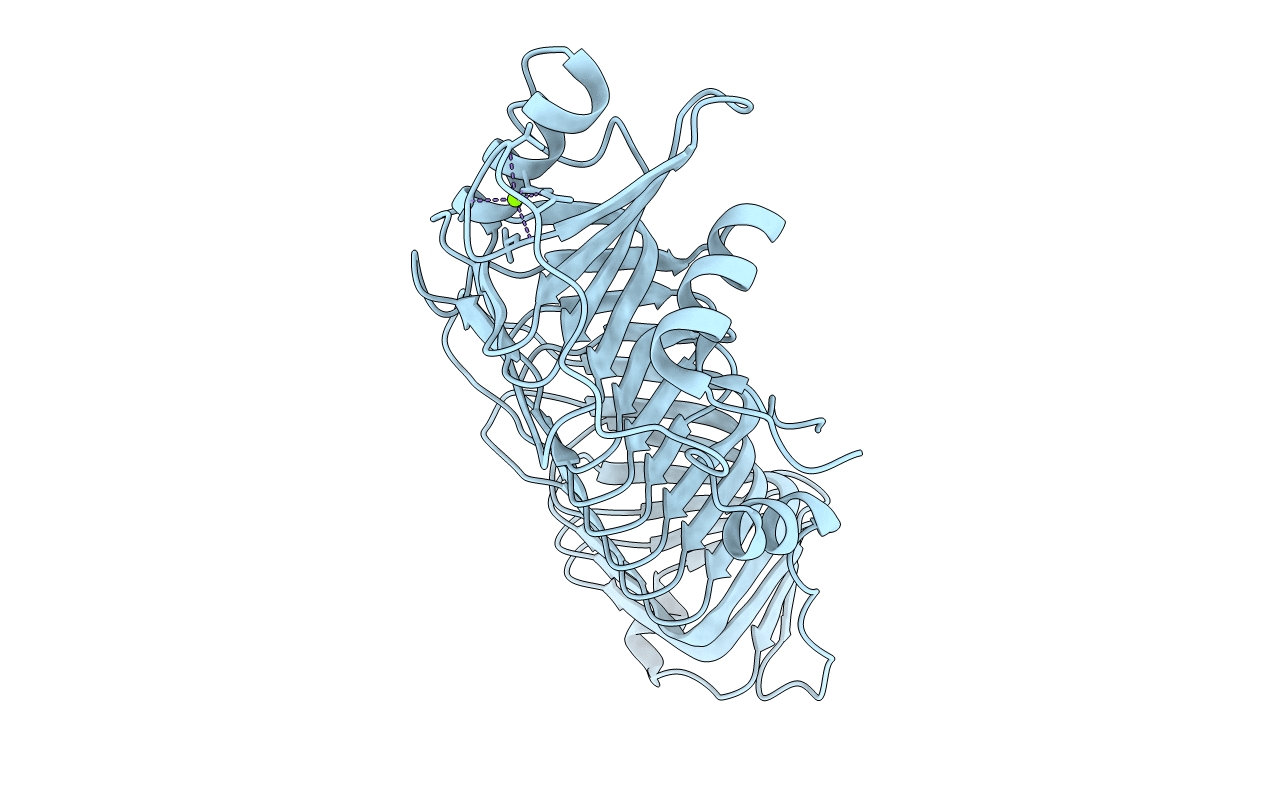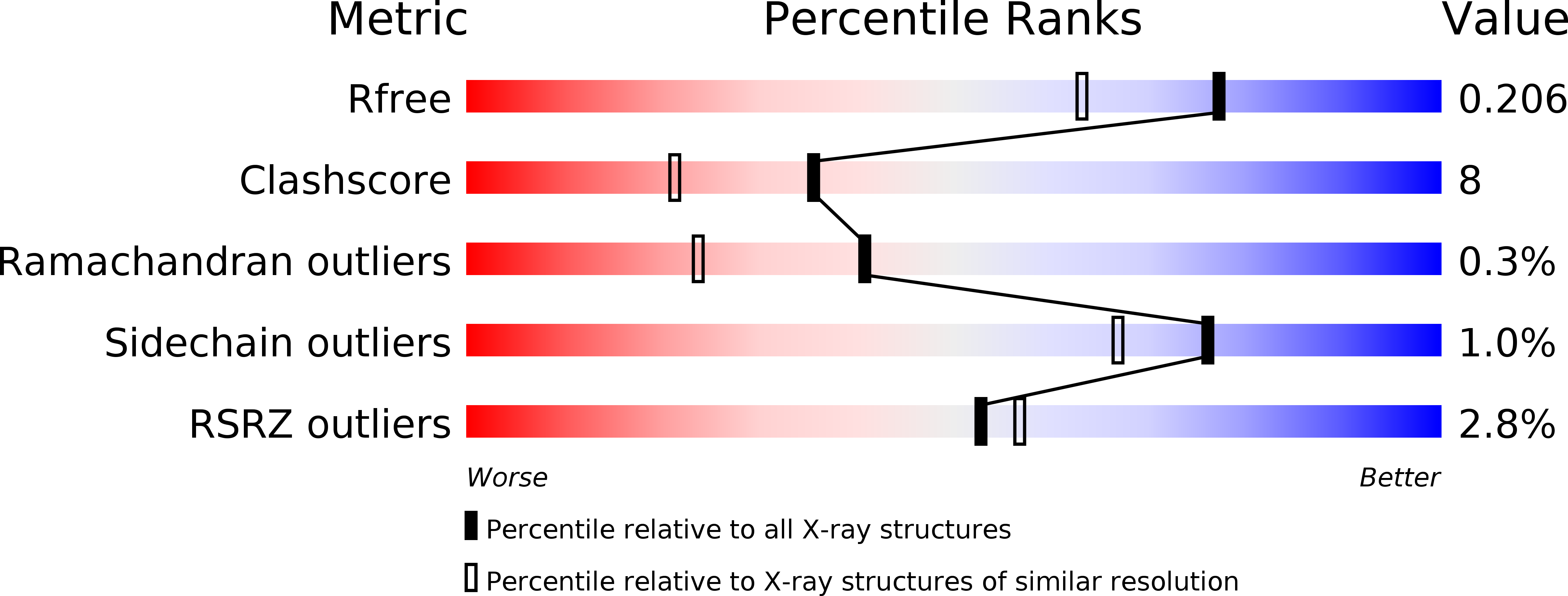
Deposition Date
2014-08-28
Release Date
2015-03-04
Last Version Date
2024-11-20
Entry Detail
PDB ID:
4WA0
Keywords:
Title:
The structure of a possible adhesin C-terminal domain from Caldicellulosiruptor kronotskyensis
Biological Source:
Source Organism:
Caldicellulosiruptor kronotskyensis (Taxon ID: 632348)
Host Organism:
Method Details:
Experimental Method:
Resolution:
1.70 Å
R-Value Free:
0.19
R-Value Work:
0.15
R-Value Observed:
0.15
Space Group:
P 21 21 21


